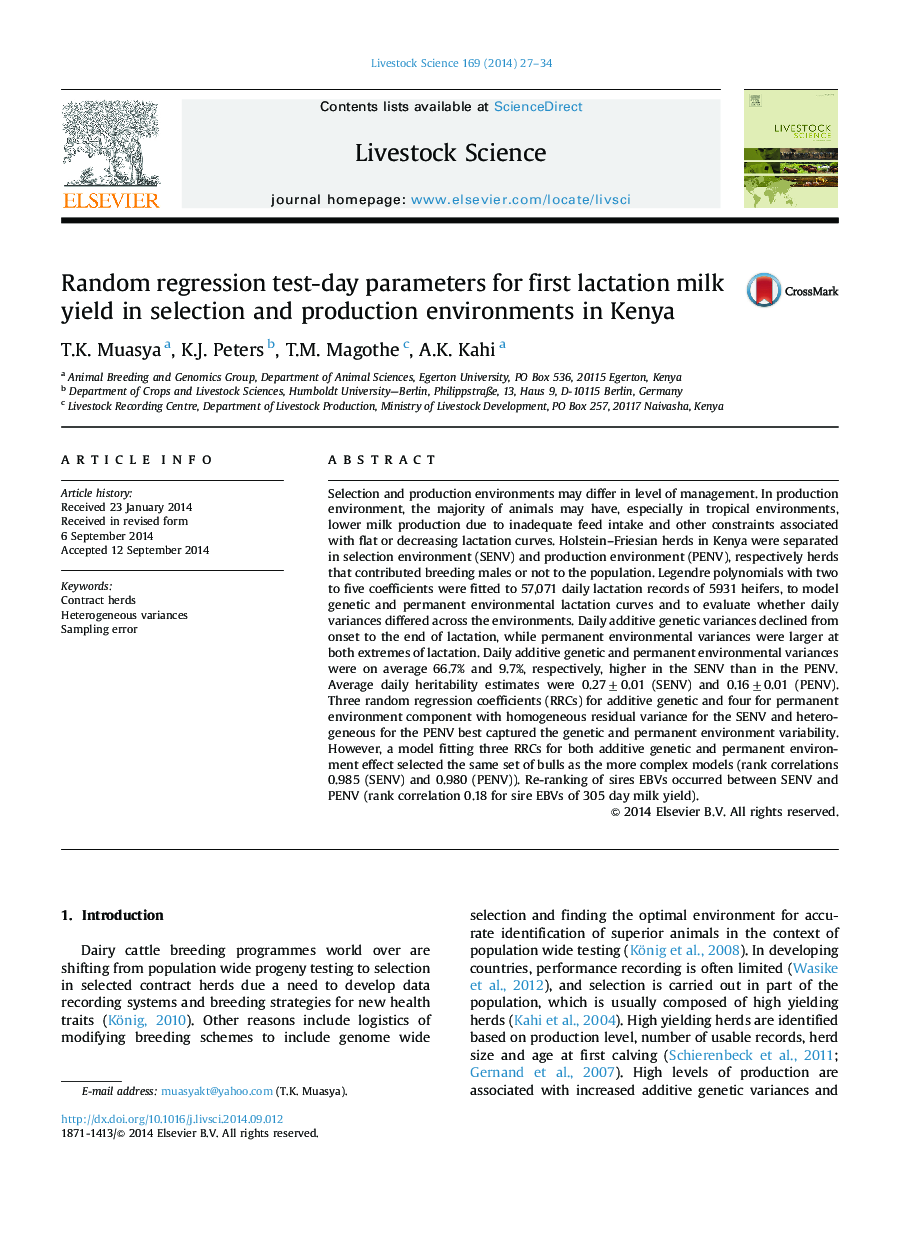| Article ID | Journal | Published Year | Pages | File Type |
|---|---|---|---|---|
| 5790128 | Livestock Science | 2014 | 8 Pages |
Abstract
Selection and production environments may differ in level of management. In production environment, the majority of animals may have, especially in tropical environments, lower milk production due to inadequate feed intake and other constraints associated with flat or decreasing lactation curves. Holstein-Friesian herds in Kenya were separated in selection environment (SENV) and production environment (PENV), respectively herds that contributed breeding males or not to the population. Legendre polynomials with two to five coefficients were fitted to 57,071 daily lactation records of 5931 heifers, to model genetic and permanent environmental lactation curves and to evaluate whether daily variances differed across the environments. Daily additive genetic variances declined from onset to the end of lactation, while permanent environmental variances were larger at both extremes of lactation. Daily additive genetic and permanent environmental variances were on average 66.7% and 9.7%, respectively, higher in the SENV than in the PENV. Average daily heritability estimates were 0.27±0.01 (SENV) and 0.16±0.01 (PENV). Three random regression coefficients (RRCs) for additive genetic and four for permanent environment component with homogeneous residual variance for the SENV and heterogeneous for the PENV best captured the genetic and permanent environment variability. However, a model fitting three RRCs for both additive genetic and permanent environment effect selected the same set of bulls as the more complex models (rank correlations 0.985 (SENV) and 0.980 (PENV)). Re-ranking of sires EBVs occurred between SENV and PENV (rank correlation 0.18 for sire EBVs of 305 day milk yield).
Related Topics
Life Sciences
Agricultural and Biological Sciences
Animal Science and Zoology
Authors
T.K. Muasya, K.J. Peters, T.M. Magothe, A.K. Kahi,
